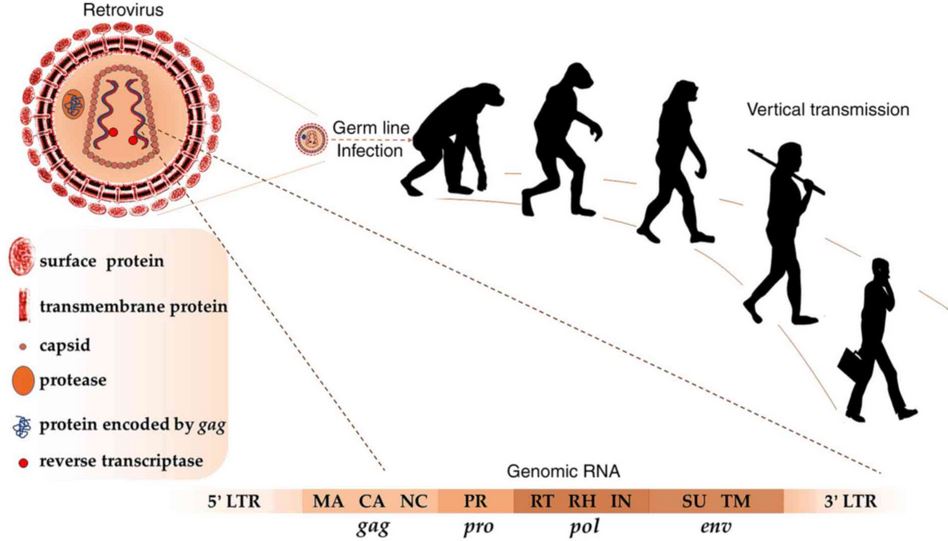Note4Students
From UPSC perspective, the following things are important :
Prelims level: Endogenous Retroviruses and their significance in human evolution

Why in the News?
Research suggests that around 8% of the human genome is composed of Endogenous Retroviruses (ERVs) often referred to as ‘zombie’ regions.
Retroviruses and Human Genome Integration
|
What are Endogenous Retroviruses (ERVs)?
- ERVs are remnants of ancient viral infections that have integrated into the genome of the host species.
- When these retroviruses infect germ cells (sperm or egg cells), their genetic material can be passed down to the next generation, becoming a permanent part of the host’s DNA.
- Zombie Regions:
- They refer to inactive viral sequences within the genome that no longer produce functional viruses but remain as embedded genetic fossils.
- These regions are a result of retrovirus integration that has lost its ability to replicate and produce proteins, yet they persist in the host’s DNA.
Evolutionary Significance of ERVs:
- In the life cycle of a retrovirus, reverse-transcribed DNA is integrated into the host’s DNA with the help of integrase.
- The viral DNA, called a provirus, hijacks human cells, turning them into virus-making factories.
- Over tens of thousands of years, many retroviruses have left genomic elements in human genome, contributing to evolutionary processes.
- Example:
- Syncytins are genes thought to have descended from ERVs and are crucial for placental development. These genes originally came from viruses and were acquired during mammalian evolution.
Their Contribution to Human Biology
- ERVs are highly expressed in the placenta and may influence conditions like preeclampsia.
- Researchers found that a particular RNA derived from an ERV is dysregulated in early-onset preeclampsia, suggesting it could be used as a biomarker for the condition.
- ERVs play a role in cell-type differentiation during embryo development.
- A protein called MERVL-gag is derived from an ERV. This transition is crucial for producing pluripotent stem cells capable of forming different cell types.
- Researchers also found that a human ERV element LTR10 affects tumour formation in colorectal cancer.
PYQ:[2021] Consider the following statements : 1. Adenoviruses have single-stranded DNA genomes whereas retroviruses have double-stranded DNA genomes. 2. Common cold is sometime caused by an adenovirus whereas AIDS is caused by a retrovirus. Which of the statements given above is/are correct? (a) 1 only (b) 2 only (c) Both 1 and 2 (d) Neither 1 nor 2 |
Get an IAS/IPS ranker as your 1: 1 personal mentor for UPSC 2024

